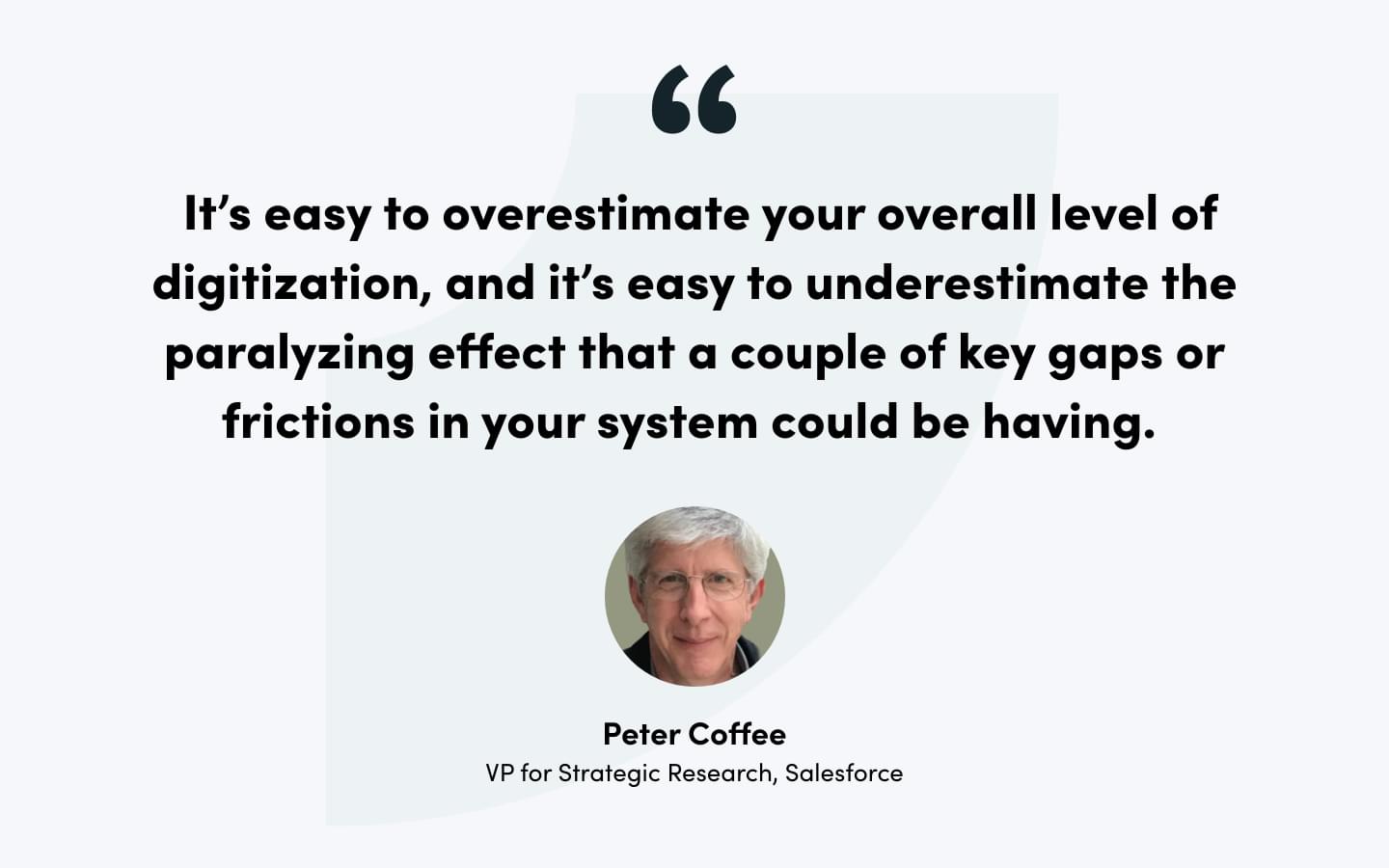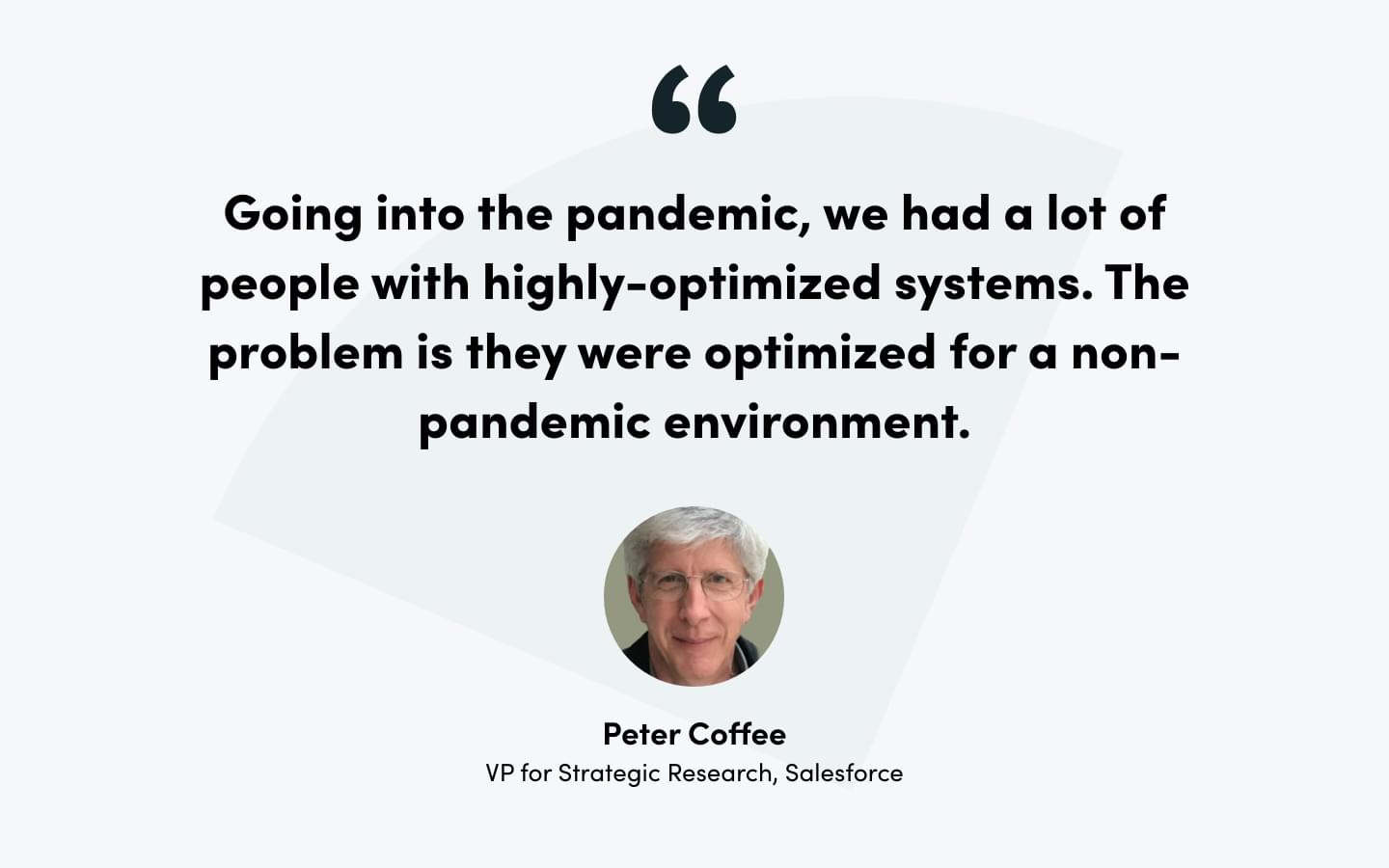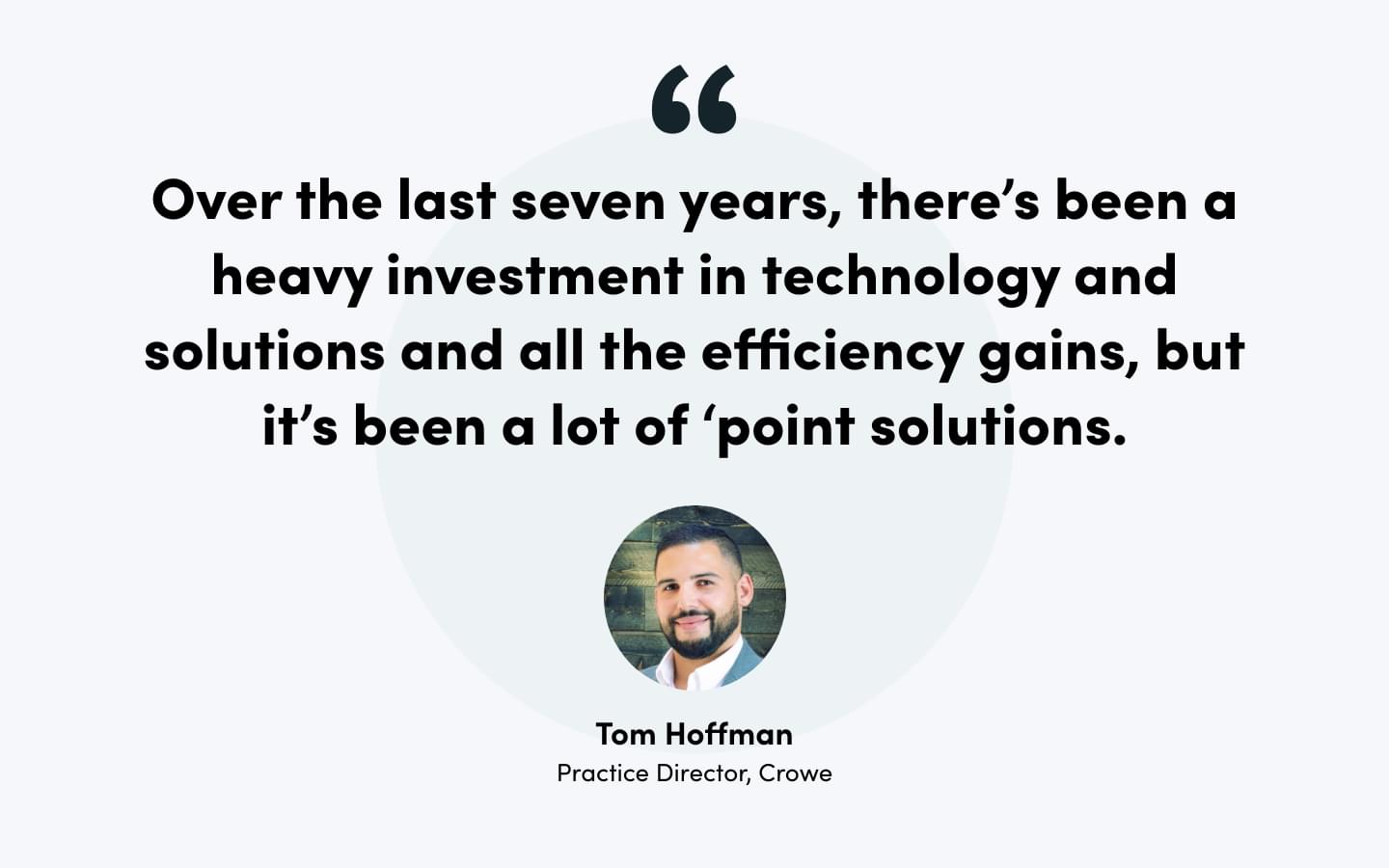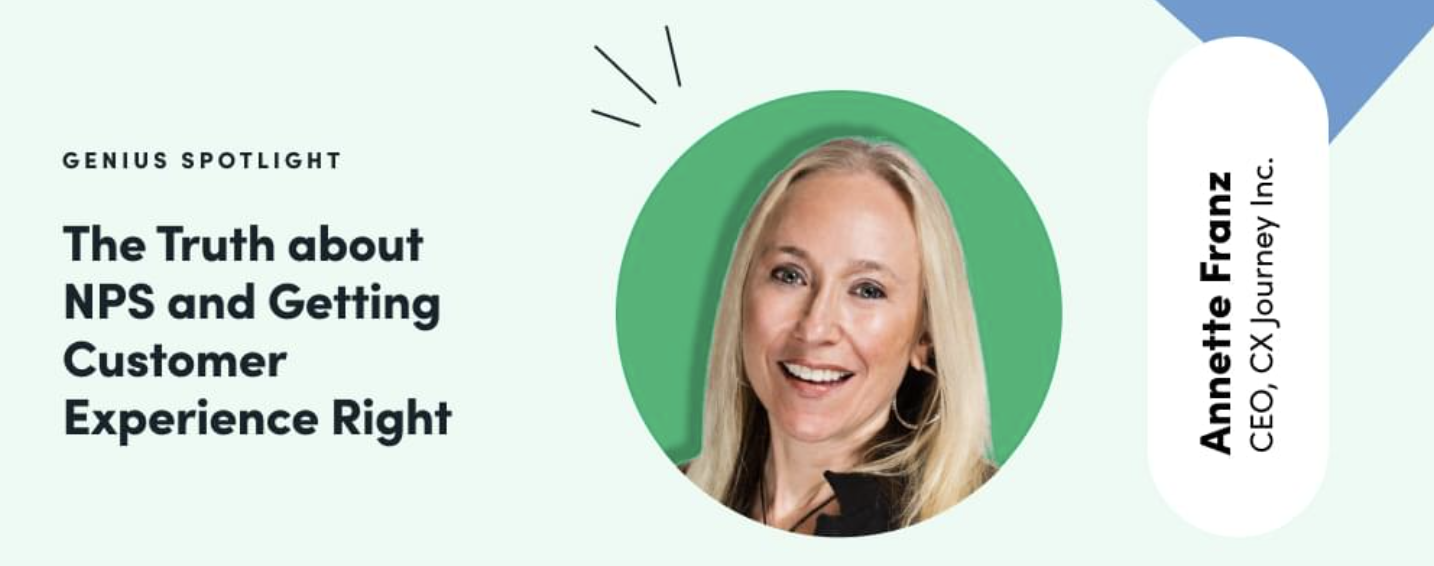After two years of uncertainty and adapting to change, organizations radically accelerated their shifts toward an automated, paperless future. But what impacts have these changes had on companies and employees alike?
Formstack, in partnership with Mantis Research, surveyed more than 2,000 U.S. knowledge workers to find out the impacts these changes have had on streamlining customer interactions and allowing employees to work on more impactful projects. The results were published in the 2022 State of Digital Maturity: Advancing Workflow Automation report.
As a part of those results, Formstack presented a panel featuring some of workflow automation’s biggest names from Salesforce, Crowe, and Banner Health. The panelists discussed what the report means for organizations and how productivity, efficiency, and profitability impact digital maturity. Read on to discover some of their key insights below.
Be Careful How You Measure Optimization
The State of Digital Maturity report classified organizations into four stages of digital maturity, with Limited being the least efficient. On the other end of the spectrum, Optimized orgs run on automated workflows, easily retain employees, and provide excellent customer experiences.

To see where event attendees felt their organization fell on the scale of digital maturity, they were polled at the start of the panel. The results, which are outlined below, revealed interesting insights from the panelists.
Limited: 24%
Invested: 37%
Refined: 30%
Optimized: 9%
Panelist Peter Coffee, VP for Strategic Research at Salesforce, pointed out that “if you’re capable of answering the question [what stage of digital maturity you’re in] with any precision, you must be in a pretty advanced state.” He also noted that organizations that think they are optimized might not be as optimized as they presume. “The places where they’re not digital are almost literally invisible to them. It’s easy to overestimate your overall level of digitization, and it’s easy to underestimate the paralyzing effect that a couple of key gaps or frictions in your system could be having.

He went on to say that you might think you’re 90% of the way, but the last 10% might be costing you half or even two-thirds of the potential productivity gains. So it’s important to be careful what you measure because an accurate measurement of the wrong thing can lead you to mis-estimate where you are and what your priorities need to be.”
Elevsis Delgadillo, VP IT Infrastructure and Operations at Banner Health, agrees. “You can generate a false sense of optimization.” And if that becomes the case, it’s easy to lose sight of the work that is left to be done. Therefore, it’s important to not only know where you are optimized, but where existing slow downs are still impacting customer experience, employee productivity, and efficiency.

Ensure You’re Optimized for Today’s Environment
It’s also not enough to merely think you’re on a path to optimization currently. Peter pointed out that “optimization and automation can be dangerous goals. Going into the pandemic, we had a lot of people with highly-optimized systems. The problem is they were optimized for a non-pandemic environment. They turned out to be brittle and fragile in the face of a need to change locations of work, change supply relationships, and so on.”

Many digitization plans were rushed due to the pandemic, and while they worked for a time, they’re no longer working long term. It’s time to figure out where you have system overlap in your tech stack and where data silos are still creating holdups.
Invest in All-In-One Solutions
Panelist Tom Hoffman, Practice Director at Crowe, also noted that while investments were made on the fly during the pandemic, they may not be the best options for you now. “Over the last seven years, there’s been a heavy investment in technology and solutions and all the efficiency gains, but it’s been a lot of ‘point solutions.’ It’s a lot of ‘this product will solve this problem and this product will solve this problem.’”

Budget comes into play here, as you spend a lot of money on one tool that typically only serves one solution. Worse, these systems don’t always integrate with others you already have in place, sending you scrambling for more technology bandaids to patch things together. You end up paying for more for complicated solutions than you would for one comprehensive tool that meets your needs and helps you innovate further, faster.
Look for solutions that communicate end to end with each other. Find one that can tell (and automate) your whole story from end to end, ensuring both customers and employees get the experience they’re after.
LEARN MORE: Save time with Formstack’s all-in-one workplace productivity solution.
Focus on Customer Experience
When examining your tech stack and moving forward with additional digitization plans, it should be about more than just implementing solutions that work for your org and employees. It’s about creating a memorable experience that allows your customers to get what they need quickly and easily.
For Elevsis, this entails making the “transition from paper service to more of a paper outcome type of model,” where paper processes are digitized, as are their outcomes, because patients don’t want to fill out the same waiting room forms over and over again. It also means rethinking services. It’s not so much about simply providing medications and prescriptions anymore. You need to reimagine your entire customer experience to provide interactions that retain customers and make their lives easier.
You have to think toward the future. Can you create a doctor’s office where patients will be seen at the exact time they were promised? Can you forecast when patients might need care based on previous interactions? For other industries, can you anticipate what your customers are going to need before they need it? That’s customer service—and customer experience.
And focusing on customer experience can reimagine your world of work, Tom says. “If you focus on patient experience…you will have better efficiencies, you’ll reduce waste, you’ll have better outcomes, your reimbursement rates will go up. Patient experience is really the key.”

Tom also detailed how Crowe tracked the touchpoints they had with their clients. By shadowing both employees and customers, they were able to determine every touchpoint and interaction they had with consumers. “Having that understanding gave us a solid foundation to make investments to make [customer experience] better.” Based on that research, they could improve interactions, communication, and efficiency. And the other panelists agreed that you cannot improve customer experience unless you know where it’s falling short.

Take Digitization to the Next Level
As Peter notes, “digitizing content is not enough.” You have to make the entire process user-friendly. Find where experiences are lacking, slowing down business, or wasting your employees’ days. Only then will you be ready to lead your organization into a truly digital and paperless future.
For more insights into how to digitize your business and automate your workflows, watch the entire discussion.











